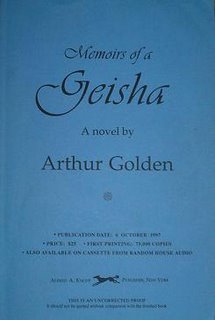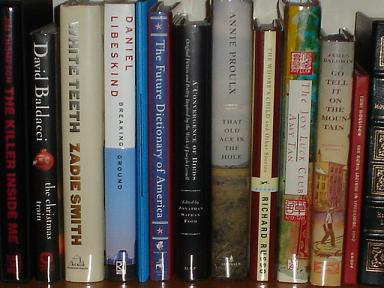Cormac McCarthy - The Road
 I remember when this book came out. I saw it on a shelf in Barnes and Noble around Halloween - and I thought the cover, as you can see to the left, has a very Halloween like color scheme. None the less, if you remember back in May of 2006, the New York Times asked 200 prominent members of the literary world "
I remember when this book came out. I saw it on a shelf in Barnes and Noble around Halloween - and I thought the cover, as you can see to the left, has a very Halloween like color scheme. None the less, if you remember back in May of 2006, the New York Times asked 200 prominent members of the literary world "What is the best work of American fiction published in the last 25 years? The winner was Toni Morrison's Beloved. But in third place, was McCarthy's novel, Blood Meridian.
Having never read anything by McCarthy, I picked up the book, and read the synopsis, I knew I had to read it. While McCarthy has written very great books - this one really grabbed my attention because it was thought provoking, and left me wondering exactly what happened in the novel. So I bought it - and in three days, I was done.
 The Road was published in the US on September 26, 2006, and was released to much fan-fare in expectation on a change of pace for McCarthy. While he is known as more of a literary author, I (personally) wouldn't categorize this in the same arena as his prior novels such as "All The Pretty Horses." I find that if you are going to start reading a McCarthy novel, The Road, would be the best choice to start with. It's fairly easy but at the same time quite profound.
The Road was published in the US on September 26, 2006, and was released to much fan-fare in expectation on a change of pace for McCarthy. While he is known as more of a literary author, I (personally) wouldn't categorize this in the same arena as his prior novels such as "All The Pretty Horses." I find that if you are going to start reading a McCarthy novel, The Road, would be the best choice to start with. It's fairly easy but at the same time quite profound.In June 2007, Oprah Winfrey gave McCarthy the first interview of his professional career to tie in with her selection of "The Road" as her book-of-the-month-club. The interview was quite interesting because until that moment, I had no idea what to think of McCarthy - his voice, his mannerisms. But he seemed quite...friendly. He opened up to Oprah and gave an insight, albeit a short one, into his thought process and his personal history.
 The collectible market for McCarthy is very iffy. There is a premium for McCarthy's signature when authentic. I, personally, won't be buying any trade editions of his books on eBay just because of his highly reclusive nature...who knows how authentic they are. But there are a few signed limited editions out there that go between $200-$450 but there is no limited edition for "The Road" yet. I'm sure that would be the one to go for a great price.
The collectible market for McCarthy is very iffy. There is a premium for McCarthy's signature when authentic. I, personally, won't be buying any trade editions of his books on eBay just because of his highly reclusive nature...who knows how authentic they are. But there are a few signed limited editions out there that go between $200-$450 but there is no limited edition for "The Road" yet. I'm sure that would be the one to go for a great price.The proof for The Road recently sold for $600+ dollars on eBay - so it's clear that his books are maintaining their value, even after what I call their "demand period" which is the time when a book reaches its heightened popularity. After that, books tend to lose their demand, if only temporarily, and that is the perfect time for collectors to swoop in and make their grab.
Either way, if you haven't picked up this book, it's very good, very touching. Worth every moment...














